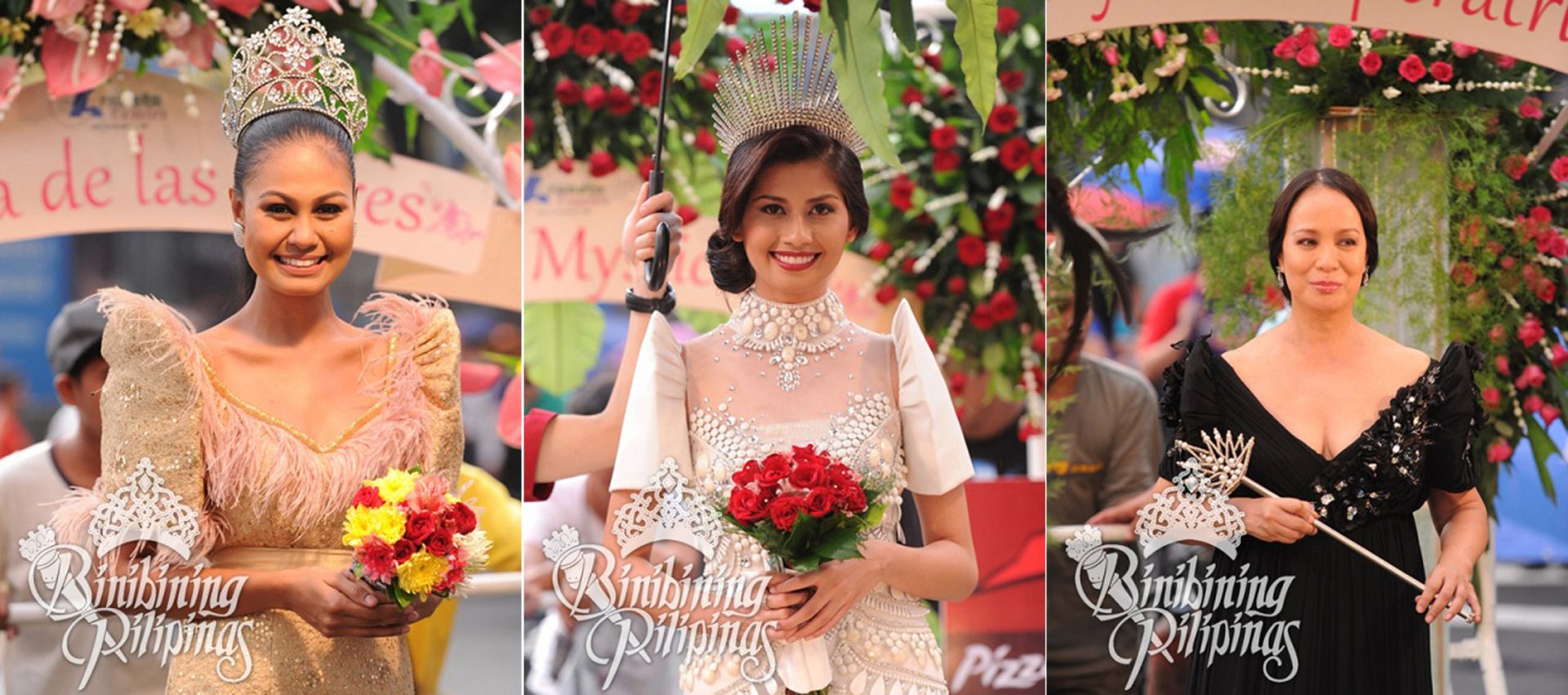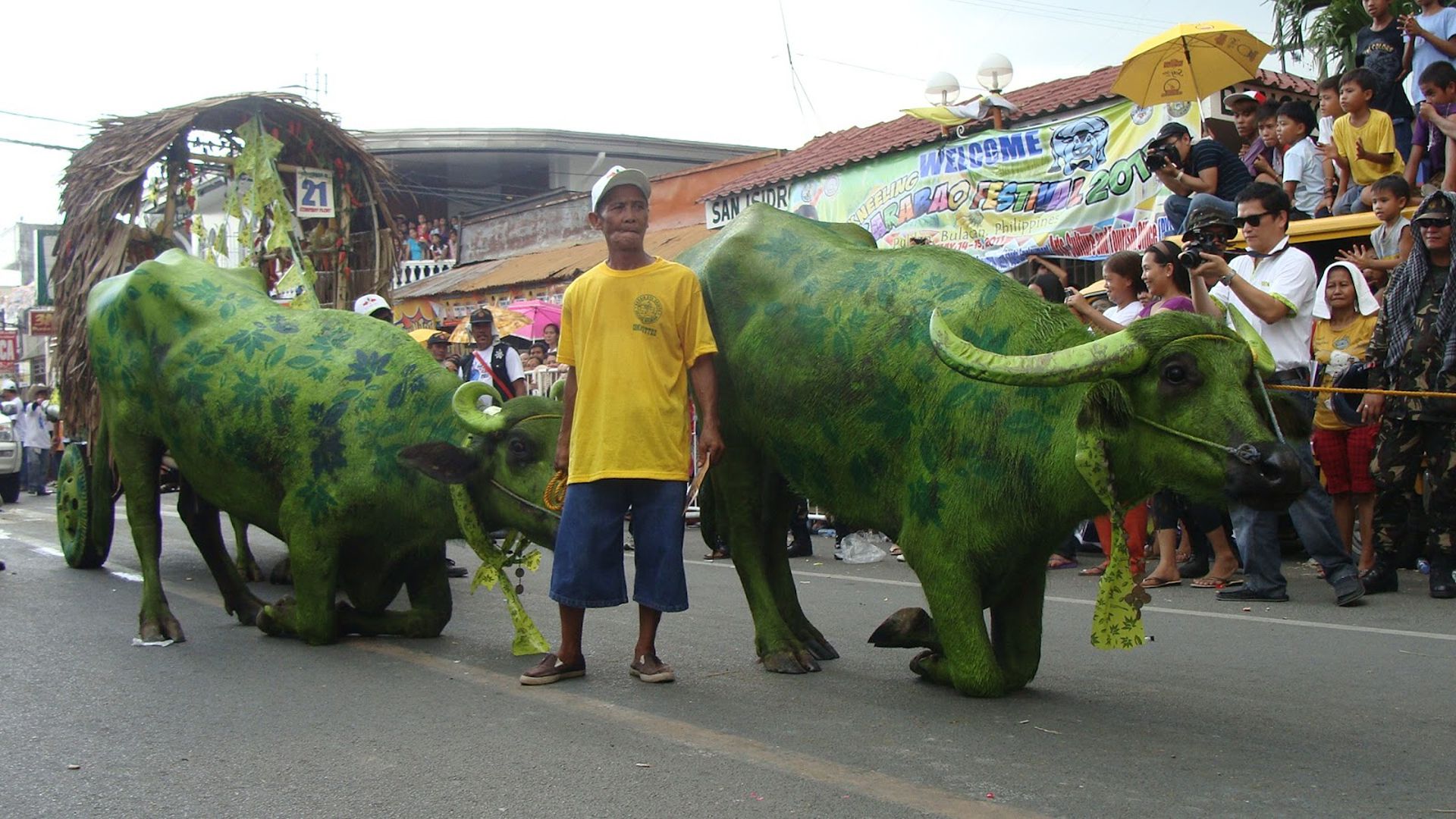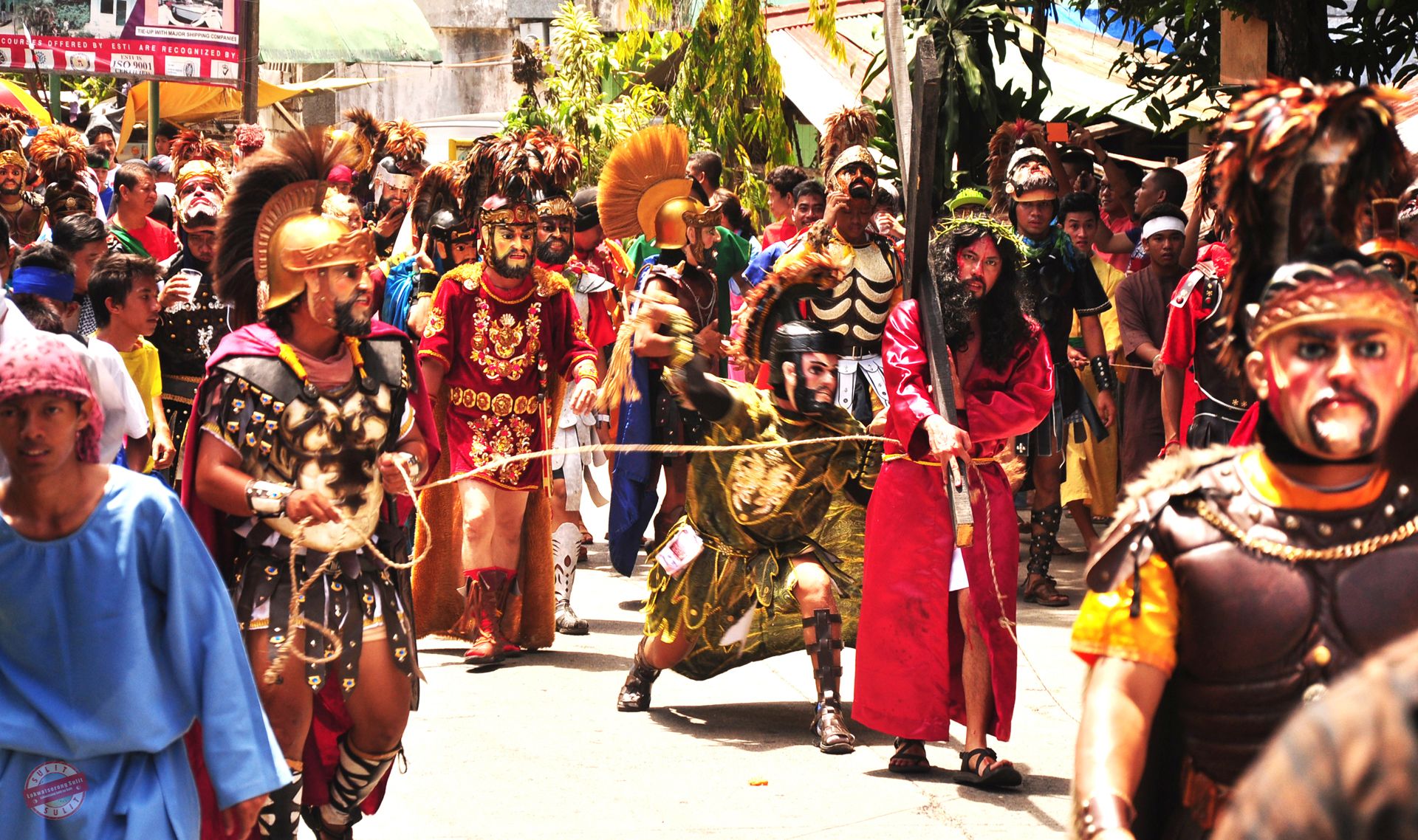
Pahiyas Festival (May 15)
Every May 15, people flock to Lucban in Quezon Province to be amazed with homes decked with kiping, a multi-coloured paper thin, lead-shaped rice kropeck, and harvested vegetables to celebrate the feast of San Isidro Labrador, the patron saint of farmers. Besides Lucban, the Pahiyas festival is also observed in Sariaya, Tayabas, and other towns in Quezon.
Before leaving Lucban, make sure to have tasted the famous Pancit Habhab, which is stir-fried noodles put in cone-shaped banana leaf wrapping and eaten using just the mouth. The Longganisang Lucban is another mouth-watering delicacy worth to try.




